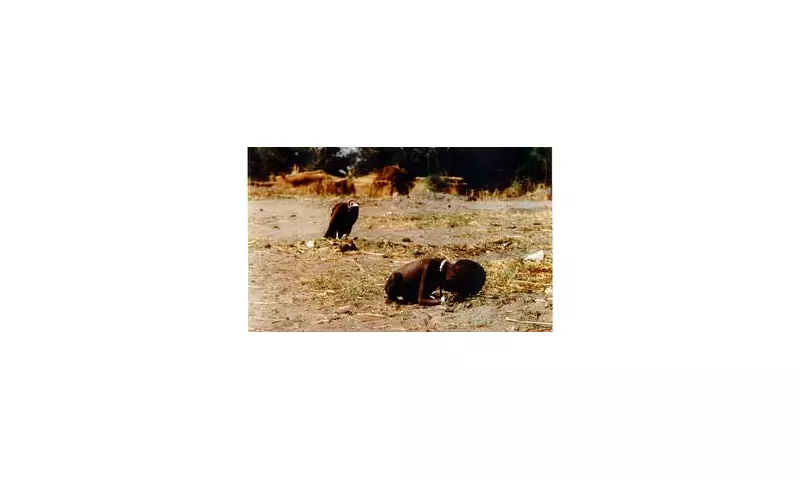
The image remains one of the most harrowing in photographic history: a severely emaciated Sudanese child collapses while a vulture lurks mere feet away, waiting. This 1993 photograph by Kevin Carter didn't just win a Pulitzer Prize - it ignited global controversy and haunted its creator until his tragic end.
The Moment That Changed Everything
In March 1993, South African photojournalist Kevin Carter travelled to Sudan to document the devastating famine. While photographing at the village of Ayod, he encountered a heartbreaking scene - a tiny child, later identified as Kong Nyong, had collapsed while struggling to reach a feeding centre. As Carter framed his shot, a vulture landed nearby, creating the chilling composition that would become world-famous.
"I was appalled at what they were doing," Carter would later recall of the vultures constantly circling the feeding centre. "I was appalled at what I was doing."
The Aftermath and The Questions
After taking the photograph, Carter chased the vulture away and sat under a tree, smoking cigarettes and crying. The image was published in The New York Times in March 1993, sparking immediate international outcry - not just about the famine, but about the photographer's actions.
Readers flooded the newspaper with questions: What happened to the child? Why didn't Carter intervene? The Times noted that Carter had been advised not to touch victims due to disease risks, but confirmed the child had continued toward the feeding centre.
The Weight of Recognition and Regret
In April 1994, Carter received the Pulitzer Prize for Feature Photography. Rather than bringing triumph, the award intensified his torment. Colleagues reported he grew increasingly troubled, haunted by the horrors he'd witnessed throughout his career covering South Africa's violence and Sudan's famine.
Friend and fellow photographer João Silva noted Carter felt "under siege, accused of exploiting the starving child and of being a vulture himself."
The Final Tragedy
Just two months after his Pulitzer victory, on July 27, 1994, the 33-year-old Carter drove to a Johannesburg park where he'd played as a child and took his own life. His suicide note spoke of depression, financial struggles, and being "haunted by the vivid memories of killings and corpses and anger and pain."
The photograph that made Carter famous continues to spark difficult conversations about photojournalism ethics, trauma, and the psychological toll of documenting human suffering. It stands as both a powerful indictment of world indifference to famine and a tragic reminder of the cost sometimes paid by those who bear witness.





